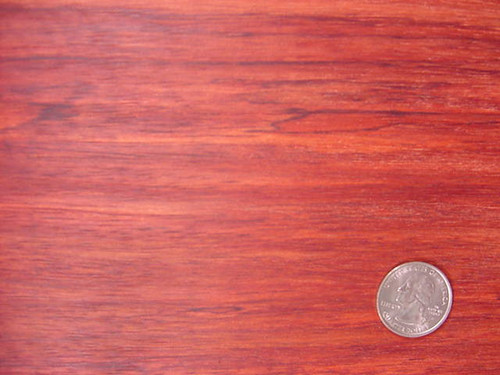Product Description
LUMBER SURFACED ON 4 ON 2 SIDES SOLD BY THE SQFT
SHIPPED RANDOM WIDTHS AND LENGTHS 1' TO 3' LENGTHS
Common Name(s): Katalox, Mexican Ebony
Scientific Name: Swartzia spp. (S. cubensis)
Distribution: Southern Mexico, Central America, and northern South America
Tree Size: 100-130 ft (30-40 m) tall, 2-4 ft (.6-1.2 m) trunk diameter
Average Dried Weight: 72 lbs/ft3 (1,150 kg/m3)
Specific Gravity (Basic, 12% MC): .94, 1.15
Janka Hardness: 3,660 lbf (16,260 N)
Modulus of Rupture: 28,010 lbf/in2 (193.2 MPa)
Elastic Modulus: 3,557,000 lbf/in2 (24.53 GPa)
Crushing Strength: 15,240 lbf/in2 (105.1 MPa)
Shrinkage: Radial: 3.9%, Tangential: 7.6%, Volumetric: 11.2%, T/R Ratio: 1.9
Color/Appearance: Heartwood is a dark reddish brown to nearly black: sometimes with a strong purple hue. Sapwood is sharply demarcated and is a pale yellowish white.
Grain/Texture: Has very fine pores and a fine texture. The grain is usually straight, but can also be irregular or interlocked. A curly or wavy grain pattern is sometimes seen as well.
Endgrain: Diffuse-porous; medium pores in no specific arrangement; solitary and radial multiples of 2-3; mineral/gum deposits occasionally present; parenchyma winged, confluent, and reticulate; narrow rays, fairly close spacing.
Rot Resistance: Varies depending upon species, but generally very durable. Heartwood is usually considered to have a high resistance to decay and termites; though it is susceptible to marine borers.
Workability: Katalox is typically considered difficult to work on account of its high density. The wood has a moderate to high blunting effect on cutters, and if there is interlocked grain present, tearout can occur during planing. Can be troublesome to glue because of its high density and natural oils present.
Odor: Katalox has a very faint odor when being worked.
Allergies/Toxicity: Katalox has been reported to cause respiratory irritation in some individuals. See the articles Wood Allergies and Toxicity and Wood Dust Safety for more information.
Pricing/Availability: Usually available in turning squares or as figured lumber (generally with a large amount of sapwood present). Expect prices to be in the mid to upper range for an imported tropical hardwood.
Sustainability: This wood species is not listed in the CITES Appendices or on the IUCN Red List of Threatened Species.
Common Uses: Inlays, fine furniture and cabinetry, parquet flooring, turnings, and other small specialty items.
Comments: Katalox has exceptional strength properties, and is among the very stiffest and strongest lumber available worldwide. Its dark color makes it a popular substitute for ebony.










